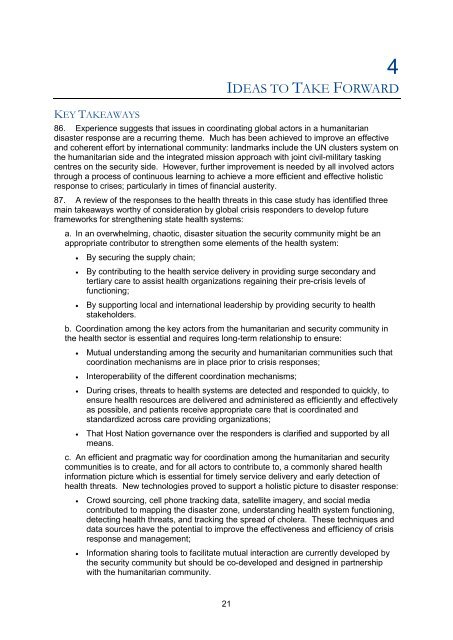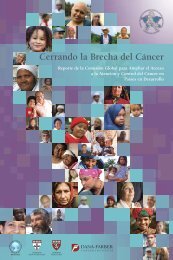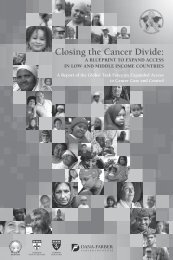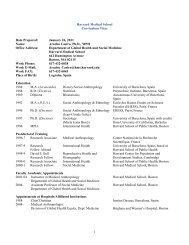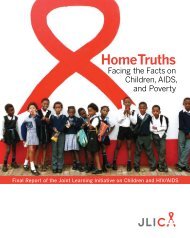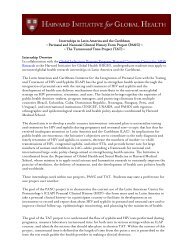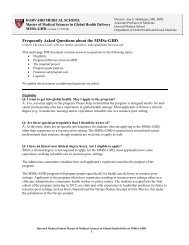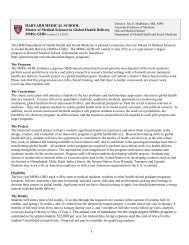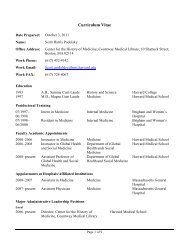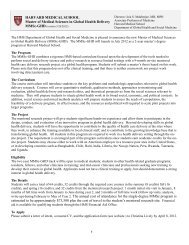Haiti Case Study - The Department of Global Health and Social ...
Haiti Case Study - The Department of Global Health and Social ...
Haiti Case Study - The Department of Global Health and Social ...
Create successful ePaper yourself
Turn your PDF publications into a flip-book with our unique Google optimized e-Paper software.
KEY TAKEAWAYS<br />
4<br />
IDEAS TO TAKE FORWARD<br />
86. Experience suggests that issues in coordinating global actors in a humanitarian<br />
disaster response are a recurring theme. Much has been achieved to improve an effective<br />
<strong>and</strong> coherent effort by international community: l<strong>and</strong>marks include the UN clusters system on<br />
the humanitarian side <strong>and</strong> the integrated mission approach with joint civil-military tasking<br />
centres on the security side. However, further improvement is needed by all involved actors<br />
through a process <strong>of</strong> continuous learning to achieve a more efficient <strong>and</strong> effective holistic<br />
response to crises; particularly in times <strong>of</strong> financial austerity.<br />
87. A review <strong>of</strong> the responses to the health threats in this case study has identified three<br />
main takeaways worthy <strong>of</strong> consideration by global crisis responders to develop future<br />
frameworks for strengthening state health systems:<br />
a. In an overwhelming, chaotic, disaster situation the security community might be an<br />
appropriate contributor to strengthen some elements <strong>of</strong> the health system:<br />
• By securing the supply chain;<br />
• By contributing to the health service delivery in providing surge secondary <strong>and</strong><br />
tertiary care to assist health organizations regaining their pre-crisis levels <strong>of</strong><br />
functioning;<br />
• By supporting local <strong>and</strong> international leadership by providing security to health<br />
stakeholders.<br />
b. Coordination among the key actors from the humanitarian <strong>and</strong> security community in<br />
the health sector is essential <strong>and</strong> requires long-term relationship to ensure:<br />
• Mutual underst<strong>and</strong>ing among the security <strong>and</strong> humanitarian communities such that<br />
coordination mechanisms are in place prior to crisis responses;<br />
• Interoperability <strong>of</strong> the different coordination mechanisms;<br />
• During crises, threats to health systems are detected <strong>and</strong> responded to quickly, to<br />
ensure health resources are delivered <strong>and</strong> administered as efficiently <strong>and</strong> effectively<br />
as possible, <strong>and</strong> patients receive appropriate care that is coordinated <strong>and</strong><br />
st<strong>and</strong>ardized across care providing organizations;<br />
• That Host Nation governance over the responders is clarified <strong>and</strong> supported by all<br />
means.<br />
c. An efficient <strong>and</strong> pragmatic way for coordination among the humanitarian <strong>and</strong> security<br />
communities is to create, <strong>and</strong> for all actors to contribute to, a commonly shared health<br />
information picture which is essential for timely service delivery <strong>and</strong> early detection <strong>of</strong><br />
health threats. New technologies proved to support a holistic picture to disaster response:<br />
• Crowd sourcing, cell phone tracking data, satellite imagery, <strong>and</strong> social media<br />
contributed to mapping the disaster zone, underst<strong>and</strong>ing health system functioning,<br />
detecting health threats, <strong>and</strong> tracking the spread <strong>of</strong> cholera. <strong>The</strong>se techniques <strong>and</strong><br />
data sources have the potential to improve the effectiveness <strong>and</strong> efficiency <strong>of</strong> crisis<br />
response <strong>and</strong> management;<br />
• Information sharing tools to facilitate mutual interaction are currently developed by<br />
the security community but should be co-developed <strong>and</strong> designed in partnership<br />
with the humanitarian community.<br />
21


